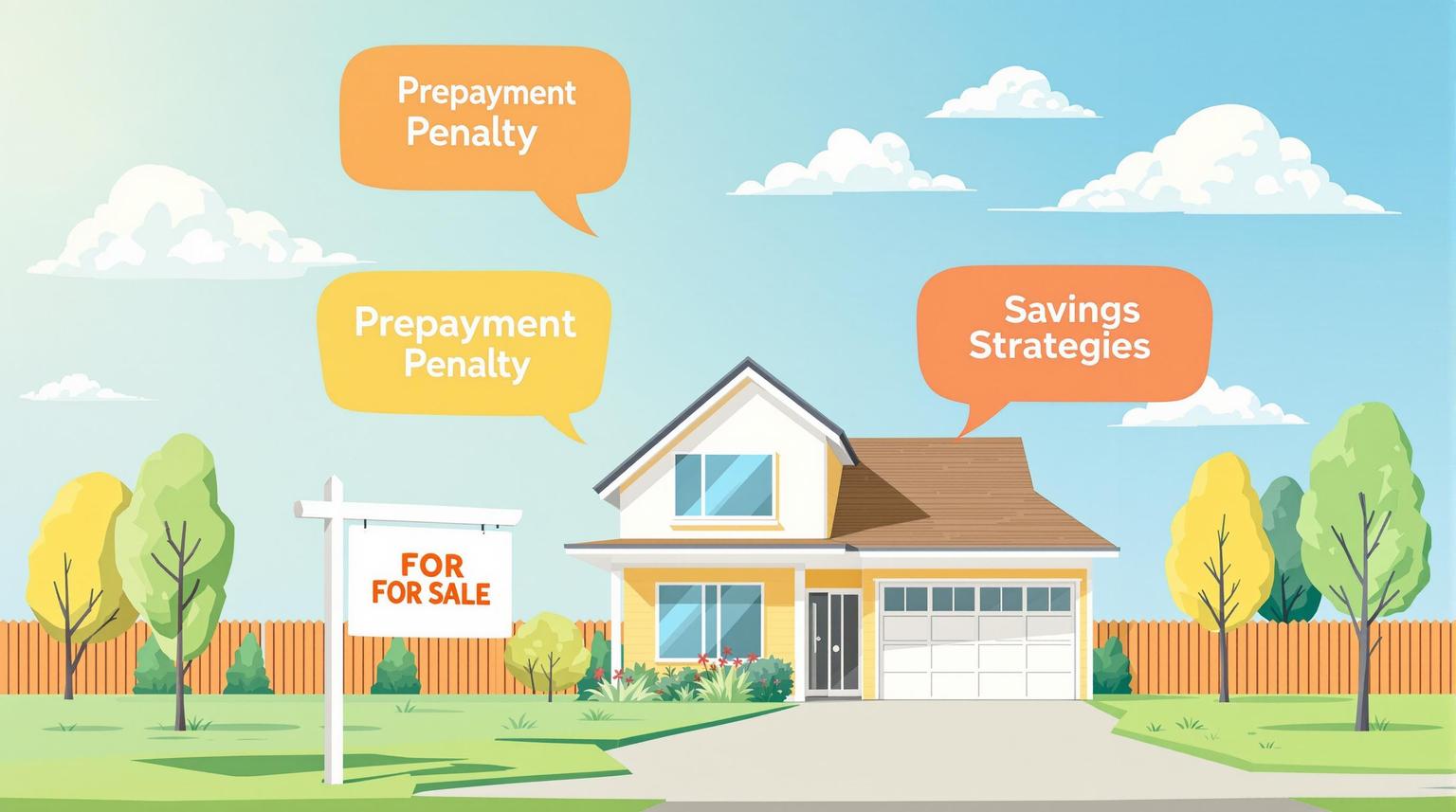When deciding between mixed-use developments and apartment-focused projects in Nova Scotia, understanding COR (Corridor) and CEN-2 (Centre-2) zoning is critical. These zoning types shape project scope, timelines, and returns. Mixed-use developers integrate residential and commercial spaces, offering diverse income streams but face longer timelines and complex regulations. Apartment builders, focusing solely on residential units, benefit from simpler zoning processes, shorter timelines, and predictable costs.
Key takeaways:
- Mixed-Use: Combines residential and commercial spaces, longer timelines (21 months average), and higher complexity.
- Apartment Builders: Focus on residential rentals, faster projects (6 months), and fixed pricing (e.g., $160,000/unit).
- Financing: Both can leverage CMHC MLI Select, offering up to 95% financing with a 50-year amortization.
- Returns: Mixed-use offers diversified income; apartment builders deliver steady rental returns (12–20% ROI).
Quick Comparison
| Factor | Mixed-Use Developers | Apartment Builders |
|---|---|---|
| Project Scope | Residential + commercial spaces | Residential units only |
| Timeline | ~21 months | ~6 months |
| Cost Predictability | Higher risk of overruns | Fixed pricing |
| Management | Complex (multiple tenants) | Simple (residential only) |
| ROI | Diversified income streams | 12–20% annual rental returns |
Your choice depends on your goals: diversified income vs. streamlined rental projects.
Mixed-Use Developers in COR and CEN-2 Zones
Mixed-Use Development Explained
Mixed-use development blends residential and commercial spaces within a single project. Picture a building with shops, offices, or community services on the ground floor, while residential units occupy the upper levels. This setup not only allows property owners to diversify their income streams but also encourages vibrant, active neighbourhoods. Understanding this concept is key to seeing how zoning rules influence the success of such projects.
COR and CEN-2 Rules for Mixed-Use Projects
Both COR and CEN-2 zoning classifications allow for mixed-use developments, but they come with stricter regulatory reviews compared to single-use projects. For example, in Halifax, the approval process for these developments can take an average of 21 months - far longer than the 14-month average seen in other areas [1]. These extended timelines and added complexities often lead some developers to explore alternative construction approaches.
Problems with Mixed-Use Development
Navigating the stricter regulations tied to COR and CEN-2 zoning can be a major hurdle for property owners. Common challenges include under-zoned parcels, heavy regulatory requirements, and delays caused by overburdened planning departments. These procedural roadblocks can significantly slow down progress [1]. Recognizing these obstacles is essential for developers aiming to successfully plan and execute mixed-use projects within these zoning frameworks.
Apartment Builders in COR and CEN-2 Zones
Apartment Builder Model Explained
When it comes to multi-unit residential projects in COR and CEN-2 zones, apartment builders take a more streamlined approach compared to mixed-use developers. Instead of juggling residential, retail, and office spaces, they focus exclusively on rental properties. This singular focus helps them navigate zoning requirements more efficiently and deliver projects faster.
Typically, apartment builders partner with property owners who already hold the land and are looking to maximize their rental income. These builders handle everything - from initial planning to the final stages of construction. This specialized approach simplifies the rezoning process, making it easier to move projects forward.
Simpler Zoning for Apartment Buildings
With their residential-only focus, apartment builders use straightforward rezoning strategies to increase unit density. In COR and CEN-2 zones, they apply for amendments to the Land Use Bylaw maps to change zoning designations, which can allow for taller buildings and more residential units.
For example, properties zoned R2 can accommodate buildings up to 35 feet high, allowing for 68 residential units on 3.14 acres. On the other hand, R4 zoning permits structures up to 45 feet, offering even greater density opportunities.
Experienced apartment builders guide property owners through the rezoning process, which includes public hearings and potential appeals. This expertise helps avoid the delays often associated with more complex mixed-use projects, ensuring a smoother and faster path to approval.
Benefits of Working with Apartment Builders
Focusing solely on residential construction eliminates many of the regulatory challenges that can slow down mixed-use developments. This approach also allows for fixed pricing and quicker construction timelines, giving property owners more predictability.
Take Helio Urban Development, for example. As Nova Scotia’s only design-build construction company specializing in 4+ unit rental properties, Helio addresses common issues like budget overruns (which can range from 30–60%) and project delays that can stretch an 8-month timeline into 18 months or more.
Helio integrates planners, architects, engineers, and builders under one roof, offering fixed-price construction at $160,000 per unit with a six-month timeline. They even include penalties of $1,000 per day for delays, ensuring accountability. By eliminating the need for multiple contractors, Helio simplifies the process for property owners.
Currently, Helio has 31 units under construction across Nova Scotia, with plans for 131 more. Property owners working with Helio secure monthly rents between $1,950 and $2,100, achieving annual returns on investment of 12–20%. This demonstrates how a focused residential model can deliver strong financial results under COR and CEN-2 zoning rules.
Mixed-Use Developers vs Apartment Builders: Direct Comparison
Main Differences Between Both Approaches
The key distinction between mixed-use developers and apartment builders lies in their project scope and complexity. This difference is particularly evident when navigating COR and CEN-2 zoning challenges. Mixed-use developers aim to combine various land uses - residential, commercial, retail, and sometimes industrial - within a single project. Their focus is on creating dynamic spaces where people can "live, work, and play", which helps reduce urban sprawl and promotes stronger community connections [2][5].
Apartment builders, meanwhile, stick to a singular purpose: constructing residential housing. Their projects are typically high-density developments designed to maximize rental income [2][4]. This narrower focus simplifies both the planning and construction processes.
Zoning complexity plays a significant role in differentiating the two. Mixed-use developments require intricate planning to integrate multiple uses, while apartment projects benefit from a more straightforward approach, as they deal exclusively with residential zoning. This often results in a smoother permitting process for apartment builders.
Budget predictability is another area where these approaches differ. Mixed-use projects, with their diverse components, often face greater financial uncertainty. Lenders may view these developments as riskier due to the challenges of valuing such complex projects [6]. In contrast, apartment builders can offer fixed-price models - like Helio Urban Development’s CA$160,000-per-unit pricing with a six-month timeline and penalties for delays - ensuring better financial transparency and accountability.
When it comes to rental income potential, mixed-use developers diversify their revenue streams across multiple tenant types, which can provide greater financial stability [3][4]. However, managing the varied needs of business tenants and residents adds a layer of complexity [6]. Apartment builders, on the other hand, focus solely on residential rental income, often achieving monthly rents between CA$1,950 and CA$2,100. This focus can yield annual returns on investment ranging from 12% to 20%.
Side-by-Side Comparison Chart
Here’s a quick breakdown of the main differences between these two approaches:
| Factor | Mixed-Use Developers | Apartment Builders |
|---|---|---|
| Project Scope | Combines residential, commercial, and retail/office spaces | Focused exclusively on residential units |
| Zoning Compliance | Requires detailed plans to integrate multiple land uses | Simplified process focused on residential zoning |
| Construction Timeline | Longer due to regulatory and tenant complexities | Six-month timeline with guaranteed delivery (vs. 12–18 months industry standard) |
| Budget Predictability | Higher risk of cost overruns due to project complexity | Fixed-price contracts with clear accountability |
| Coordination Complexity | Multiple contractors for different components | Managed by a single, integrated team |
| Financing Difficulty | More challenging due to mixed-use risks | Easier access to residential financing, including CMHC programs |
| Management Complexity | Balances needs of business tenants and residents | Streamlined management for residential renters only |
| Revenue Model | Income from a mix of residential and commercial tenants | Optimized for residential rental returns |
| Permit Requirements | Requires multiple permits (e.g., water, right of way, grade alteration) | Streamlined process with fewer additional permits |
In Halifax, both approaches require Commercial Building Permits for large-scale residential projects - those with more than four units, three storeys, or a footprint exceeding 600 square metres [7]. However, mixed-use developments often need additional permits, such as Water Permits, Right of Way Permits, and Grade Alteration Permits. These extra steps add to the project’s complexity and timeline.
Choosing between these approaches depends on your goals, risk tolerance, and willingness to manage development intricacies. Your decision should align with zoning requirements and construction strategies to ensure a successful project.
sbb-itb-16b8a48
Picking the Right Approach for Your Property
Matching Your Goals with Zoning Rules
When deciding between mixed-use projects and apartment developments, the first step is to align your investment goals with the zoning rules in your area. For instance, understanding how COR and CEN-2 zoning requirements apply to your property is critical. If your primary goal is steady rental income with predictable financial returns, apartment builders might be the better fit. Residential projects of this nature often provide consistent returns and are easier to manage.
Your risk tolerance is another important factor. Mixed-use developments, while offering multiple income streams, tend to be more complex and carry higher risks. For those who value stability and straightforward management, focusing solely on residential projects simplifies things. With just one revenue model, you can create more accurate financial projections and streamline property management once construction is complete.
The timeline also plays a big role in achieving your desired return on investment. Working with integrated apartment builders can significantly shorten the construction period - sometimes completing projects in as little as six months. This means you can start generating rental income sooner. On the other hand, delays in construction can be costly. For example, a four-unit building could lose up to CA$8,800 per month in potential revenue if even minor setbacks occur.
How Integrated Builders Fix Common Problems
Traditional construction methods often involve juggling multiple contractors, which can lead to budget overruns and delays. In fact, coordinating several independent professionals can cause costs to skyrocket by 30% to 60% and result in lengthy project delays. Integrated builders solve these issues by combining planning, design, and construction under one roof. This approach ensures fixed pricing and timely delivery, eliminating the miscommunication that often plagues fragmented setups.
Another advantage of integrated builders is their commitment to quality control. By overseeing the entire project, they maintain consistent standards. With inspections by Professional Engineers conducted five times during construction and a two-year warranty on all work, you can trust that every detail meets high-quality benchmarks.
"I personally guarantee every timeline because I've felt the pain of construction delays", says Lloyd Liu.
This streamlined process not only reduces delays but also strengthens the foundation for maximizing your investment returns.
Getting the Best ROI Under Halifax Zoning Rules
Navigating Halifax's zoning regulations to maximize your ROI often involves taking advantage of local funding and energy efficiency incentives. For example, the CMHC MLI Select program offers property owners access to 95% financing with just a 5% down payment, along with 50-year amortization periods. To qualify, your building must meet energy efficiency standards that are 40% above standard building codes. While this may increase upfront construction costs, the improved financing terms can quickly push your cash flow into the positive zone. In fact, CMHC programs can boost your leverage ratio from 5:1 under traditional financing to 20:1.
Investing in energy efficiency also reduces long-term operating costs. Features such as triple-pane windows and ductless heat pumps not only lower utility expenses but also make your building more sustainable.
Additionally, rental-ready construction can eliminate the typical 60-day vacancy period between project completion and tenant move-in. By including Energy Star appliances, smart home technology, and window coverings in your construction contract, tenants can occupy the property immediately. This approach not only saves on retail appliance costs but also allows rental income to start up to two months earlier.
Finally, focusing on properties within a 90-minute radius of Halifax ensures that your builder is familiar with local zoning rules and can respond quickly to any issues. This local expertise leads to lower transportation costs, more frequent site visits, and a smoother overall construction process.
Key Points for Property Owners
Fragmented Construction vs Integrated Design-Build: What to Know
When constructing a rental property with 4 or more units, the method you choose can significantly impact your timeline and how predictable the project will be. Traditional fragmented construction, where separate teams handle different aspects of the project, often results in delays, pushing back your ability to start earning rental income.
On the other hand, an integrated design-build approach combines planners, architects, engineers, and construction crews under one team. This unified system provides fixed pricing and guaranteed timelines, often backed by penalty clauses for delays. With this approach, construction can be completed in as little as six months, helping you start earning rental income sooner and boosting your return on investment (ROI).
Steps to Take as a Property Owner
Understanding the differences in construction methods is just the beginning. Here's how to move forward:
- Check local zoning and building regulations: Start by confirming setback requirements, height restrictions, and density limits for your property. Your municipal planning office is the best resource for this information and will help you shape the scope of your project within local guidelines.
- Assess your finances and risk tolerance: If steady cash flow and reduced construction uncertainties are priorities, the integrated design-build model is often the better choice. In fragmented setups, juggling multiple contracts can lead to unexpected costs and scheduling issues.
- Leverage local expertise: If your property is within 90 minutes of Halifax, working with builders familiar with regional zoning can make a big difference. Look for contracts that include fixed pricing, clear completion dates, and penalty clauses for delays. Many integrated builders also offer daily photo updates and thorough quality checks, keeping you informed and confident throughout the process.
Taking these steps can simplify the construction process and set you up for a successful rental property investment.
How You Can Unlock More Cash Flow with Mixed-Use Properties
FAQs
What are the pros and cons of choosing a mixed-use development versus an apartment building in COR and CEN-2 zones?
Mixed-use developments in COR and CEN-2 zones come with a lot of perks. They allow for more adaptable zoning, making it easier to blend residential, commercial, and recreational spaces. This combination can lead to lively, multi-purpose communities while also boosting property tax revenues. On the flip side, these projects often come with higher building costs, more intricate infrastructure needs, and potential issues like noise or operational disruptions.
Apartment buildings, meanwhile, offer a more straightforward path. They align with specific density targets and can deliver strong rental returns. Their design is typically simpler since they focus solely on residential use. However, challenges like zoning limits, such as Floor Area Ratio (FAR) caps, or the need for bonus zoning provisions, can complicate the approval process. Deciding between these two approaches really depends on your overall project goals, financial plan, and how you intend to use the property.
How do COR and CEN-2 zoning challenges affect timelines and cost predictability for mixed-use developments versus apartment buildings?
Navigating zoning regulations in Nova Scotia's COR and CEN-2 areas can significantly affect how long projects take and how much they cost. Mixed-use developments, especially those with taller buildings, often deal with drawn-out approval processes, higher construction expenses, and delays caused by complex negotiations. These hurdles make it harder to predict both timelines and budgets, adding layers of uncertainty.
By contrast, apartment builders using fixed-price models tend to have more stable cost estimates, averaging about $160,000 per unit. Even so, zoning incentives like bonus zoning come with their own set of complicated approval steps, which can also lead to delays. In the end, mixed-use developments are generally more prone to these zoning-related challenges, making it tougher to stick to schedules and control costs.
How does the integrated design-build approach help speed up apartment construction and control costs?
The integrated design-build method simplifies apartment construction by merging the design and construction stages into a unified process. This approach eliminates the need for separate contracts and sequential workflows, cutting down on delays and keeping things moving efficiently.
By encouraging close teamwork among all stakeholders, this method improves communication, reduces the risk of misunderstandings, and keeps costs in check. With a fixed pricing model, property owners can dodge surprise expenses and benefit from a quicker, more reliable construction timeline that aligns with their investment plans.



